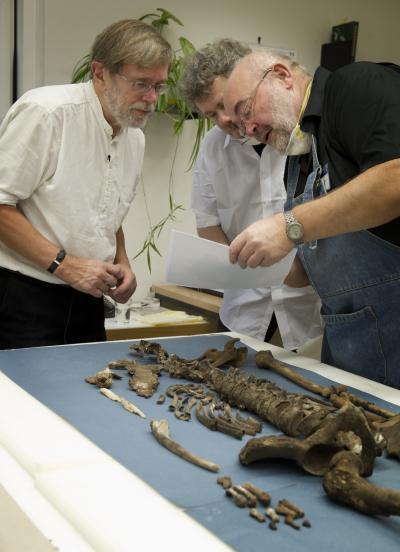It's been a mystery for over 400 years. 11 days after he took ill, he passed away on October 24th, 1601 and in that wake arose a host of speculations, myths, conspiracies and hypotheses.
One persistent theory, that involved both misadventure and claims of murder, was mercury; that he had self-experimented/self-medicated the mercury, or that he was poisoned.
In 2010, Brahe was exhumed from his grave in Prague and a Danish-Czech team of researchers has been working to determine the cause of his death. The results of this intensive work now make it possible to rule out mercury poisoning as a cause of death.
Rumors of death by poisoning arose shortly after he died - Brahe's famous assistant Johannes Kepler was identified as a possible murder suspect and other candidates have been singled out for suspicion throughout the years. According to Dr Jens Vellev, an archaeologist at Aarhus University in Denmark who is heading the research project, the mercury poisoning theory received corroboration from repeated tests of the well-preserved remains of Tycho Brahe's beard which were removed from the grave when his body was exhumed for the first time in 1901.
"To definitively prove or disprove these much debated theories, we took samples from Tycho Brahe's beard, bones and teeth when we exhumed his remains in 2010. While our analyses of his teeth are not yet complete, the scientific analyses of Tycho Brahe's bones and beard are," said Vellev.
The levels of mercury in Tycho Brahe's beard were investigated by Dr. Kaare Lund Rasmussen, associate professor of chemistry at the University of Southern Denmark and Dr. Jan Kučera, professor of nuclear chemistry at the Nuclear Physics Institute in Prague.

Research leader Jens Vellev, Aarhus University examining the remains of Tycho Brahe in 2010. Photo: Jacob C. Ravn, Aarhus University
'We measured the concentration of mercury using three different quantitative chemical methods in our labs in Odense and Řež, and all tests revealed the same result: that mercury concentrations were not sufficiently high to have caused his death,' said Rasmussen, who analyzed the bone samples using cold vapor atomic absorption spectroscopy at the University of Southern Denmark. 'In fact, chemical analyses of the bones indicate that Tycho Brahe was not exposed to an abnormally high mercury load in the last five to ten years of his life."
'Analyses of hairs from the beard were performed using radiochemical neutron activation analysis and proton microprobe scanning in Řež. They reflect the mercury load in the last approximately eight weeks of Tycho Brahe's life, and these analyses show that mercury concentrations fell from the high end of the normal level eight weeks before death to the low end of the normal level in the last two weeks before death,' explained Kučera.
The "silver nose" that wasn't
In addition to his beard, another central element of the Tycho Brahe myth has been subjected to quantitative analysis: his famous artificial nose. Brahe lost part of his nose in a duel in 1566. According to local legend, the prosthetic nose he wore for the rest of his life was made of silver and gold.
When Tycho Brahe's grave was opened for the first time in 1901, his nose prosthesis was not found, but there were greenish stains around the nasal region - traces left by the prosthesis.
'When we exhumed the body in 2010, we took a small bone sample from the nose so that we could examine its chemical composition. Surprisingly, our analyses revealed that the prosthesis was not made of precious metals, as was previously supposed. The green colouration turned out to contain traces of equal parts copper and zinc, which indicates that the prosthesis was made of brass. So Tycho Brahe's famous "silver nose" wasn't made of silver after all,' explained Vellev.
Researchers also took advantage of the opportunity to perform a CT- scanning Tycho Brahe's skeleton while they had access to his remains in 2010. The researcher team hopes to be able to reconstruct Tycho Brahe's face on the basis of the scanning and their analyses.





Comments